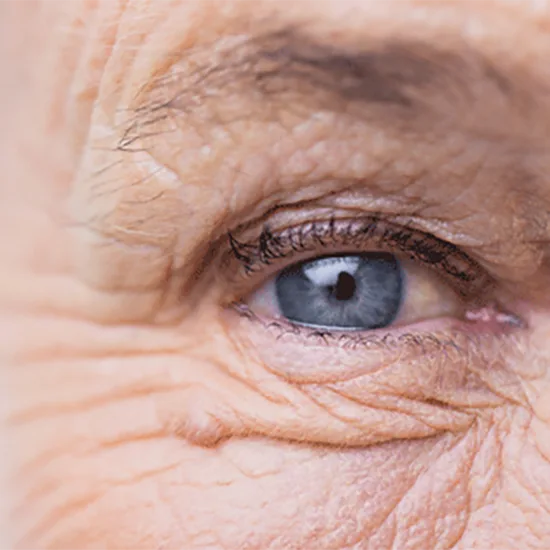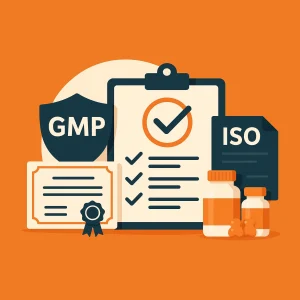Health can change over time due to environmental factors, lifestyle, genetic predisposition, or certain conditions. Over time, eye health may deteriorate or even be lost if we do not take care of our eyes and support them properly. That’s why we should protect and improve our eye health by supporting it with essential supplements. Age-Related Macular Degeneration (AMD) is a common disease that can occur with aging. Let’s explore its causes, prevention methods, and possible treatments together!
What is a Carotenoid?
Carotenoids are lipophilic pigments responsible for the wide range of colors found in nature due to their ability to absorb light. These pigments contribute to the coloration of plants, animals, and flowers. Carotenoids are classified into two subcategories:
- Provitamin A Carotenoids (Can be converted into Vitamin A in the human body)
- Non-Provitamin A Carotenoids (Cannot be converted into Vitamin A in the human body)1
Lutein and zeaxanthin belong to the group of non-provitamin A carotenoids called xanthophylls. Xanthophylls differ from other carotenoids due to the presence of oxygen-containing functional groups. Although xanthophylls share structural similarities with other carotenoids, such as beta-carotene, their free hydroxyl groups located at both ends of the molecule provide them with unique biochemical properties. These hydroxyl groups allow lutein and zeaxanthin to interact with cell membranes and lipoproteins in ways that other carotenoids cannot.
Foods Rich in Lutein and Zeaxanthin: Which Ones Are More Beneficial?
The human body cannot synthesize lutein and zeaxanthin, so they must be obtained through diet. These compounds are found in high concentrations in green leafy vegetables such as spinach and collard greens. Additionally, lutein and zeaxanthin are also present in egg yolk.1
Zeaxanthin formulation1 Lutein formulation1
Foods Rich in Lutein and Zeaxanthin:
- Green leafy vegetables: Spinach (~11.9 mg/100 g), collard greens (~39 mg/100 g), lettuce, broccoli, Brussels sprouts, parsley, kale
- Other vegetables and foods: Squash, bell peppers, egg yolk/li>
- Fruits: Nectarine, sweet red pepper, pumpkin, blackberry, avocado, raspberry, gooseberry, kiwi, blackcurrant
Lutein and Zeaxanthin Supplements and Bioavailability: How Can They Be Better Absorbed?
Although eggs do not contain as much lutein and zeaxanthin as green leafy vegetables, recent studies show that the xanthophylls obtained from egg yolk have significantly higher bioavailability.2
Lutein and Zeaxanthin Content in Vegetables & Safe Daily Intake
The lutein and zeaxanthin content in vegetables can vary between 0.01 and 40 mg per 100 g.
According to the European Food Safety Authority (EFSA), the safe daily intake of synthetic zeaxanthin is 0.75 mg per kg of body weight. For a 70 kg individual, this corresponds to approximately 53 mg per day1.
Lutein and Zeaxanthin Absorption and Storage
Lutein and zeaxanthin are fat-soluble compounds. Therefore, consuming dietary fats is essential for their absorption in the intestine and their transport through the bloodstream to different tissues in the body.
Before absorption, lutein esters are hydrolyzed by gastrointestinal enzymes, particularly cholesterol esterase. The bioavailability of lutein and zeaxanthin may decrease due to food processing methods such as mincing and cooking.
These compounds are primarily stored in fat tissue and the liver and are excreted from the body through the bile and kidneys.1
Antioxidant Properties of Lutein and Zeaxanthin
Lutein and zeaxanthin are powerful antioxidants that protect against oxidative stress, which is caused by free radicals damaging cells. High levels of oxidative stress are linked to various health problems, including neurodegenerative diseases such as Alzheimer’s, heart disease, chronic kidney disease, cancer, type 2 diabetes, and obesity.
These carotenoids have anti-inflammatory properties, support the immune system, and may also benefit bone health. Studies suggest that lutein may reduce the risk of non-alcoholic fatty liver disease (NAFLD) and help lower total cholesterol and fat accumulation.3
What Are the Benefits of Lutein and Zeaxanthin on Eye Health and Antioxidant Effects?
Although there are around 20 types of carotenoids present in human plasma, only lutein and zeaxanthin accumulate in the retina. These xanthophylls are found in high concentrations in the macula and the eye lens. Zeaxanthin is primarily concentrated in the central fovea, while lutein is more abundant in the peripheral retina.1
Macula is a part of the eye that contains light-sensitive cells and has a high concentration of lutein and zeaxanthin. These pigments filter blue light (400-500 nm) and neutralize reactive oxygen species, helping to protect the eyes from oxidative stress.1
Studies show that lutein and zeaxanthin help prevent age-related vision loss. In particular, these compounds reduce the risk of age-related macular degeneration (AMD) due to their antioxidant, anti-inflammatory, and anti-angiogenic properties.
Age-related macular degeneration (AMD) is a common eye disease that causes vision loss due to damage to the central part of the retina. There are two main types:
- Dry AMD (Early stage): It develops slowly as the retina gradually thins.
- Wet AMD (Advanced stage): It is characterized by the growth of abnormal blood vessels and progresses rapidly.
Lutein and zeaxanthin have three main mechanisms of action in the AMD process:
- Filtering blue light: Protecting the retina from photo-oxidative damage
- Neutralizing free radicals: Reducing oxidative stress
- Antioxidant, anti-inflammatory, and anti-angiogenic effects: Supporting retinal health
Other Eye Health Benefits of Lutein and Zeaxanthin:
- Cataract: Cataract is the formation of cloudy spots in the eye’s lens. Consuming lutein- and zeaxanthin-rich foods may help slow down cataract development.
- Diabetic Retinopathy: Human and animal studies suggest that lutein and zeaxanthin supplements improve retinal function in diabetic patients.
- Retinal Detachment: A 2019 review found that lutein supplementation enhanced retinal protection in animal studies.
- Uveitis: Uveitis is an inflammation that occurs in the middle layer of the eye. Research suggests that lutein may help prevent uveitis and reduce oxidative stress.3
What Are the Skin Benefits of Lutein and Zeaxanthin?
Lutein and zeaxanthin are present in human skin. Studies suggest that these compounds may help protect the skin from harmful ultraviolet (UV) radiation due to their antioxidant properties.
- A 2020 clinical study found that carotenoid levels increased in individuals who took carotenoid supplements. The study also showed a reduction in UVB-induced redness (sunburn) and UVA-induced pigmentation (skin darkening).
- Another 2020 pilot clinical trial found that postmenopausal women who consumed Ataulfo mangoes, which contain lutein and zeaxanthin, for 12 weeks experienced improvement in facial wrinkles. Researchers suggest that foods like mangoes, which are rich in beta-carotene and other carotenoids, may contribute to skin health.3
What Are the Brain Health Benefits of Lutein and Zeaxanthin?
Lutein, which is also essential for brain health, is found in high concentrations in nerve tissue. Studies suggest that lutein is associated with cognitive function and may have protective effects against neurodegenerative diseases during aging.1
In summary,
Lutein and zeaxanthin are essential carotenoids for overall health, particularly eye health. Due to their powerful antioxidant and anti-inflammatory properties, they may help reduce the risk of age-related macular degeneration (AMD), support brain health, and protect the skin against UV radiation.
Green leafy vegetables, egg yolk, and peppers are rich sources of these compounds. To enhance bioavailability, it is recommended to consume them with dietary fats. Regular intake of lutein and zeaxanthin may serve as a protective strategy against age-related health issues. Additionally, supplements containing these carotenoids can help ensure adequate intake.
We recommend checking out Gummy Worlds’ Y’our Gummie products containing lutein and zeaxanthin! With its powerful formulation and ease of consumption, you can get the support you need with just 2 gummies a day. Support your eye health with Y’our Gummie EYE!
References:
- Mrowicka M, Mrowicki J, Kucharska E, Majsterek I. Lutein and Zeaxanthin and Their Roles in Age-Related Macular Degeneration-Neurodegenerative Disease. Nutrients. 2022 Feb 16;14(4):827. doi: 10.3390/nu14040827. PMID: 35215476; PMCID: PMC8874683.
- Richard L. Roberts, Justin Green, Brandon Lewis,Lutein and zeaxanthin in eye and skin health,Clinics in Dermatology,Volume 27, Issue 2,2009,Pages 195-201,ISSN 0738-081X, https://doi.org/10.1016/j.clindermatol.2008.01.011
- https://www.healthline.com/nutrition/lutein-and-zeaxanthin#what-they-are






